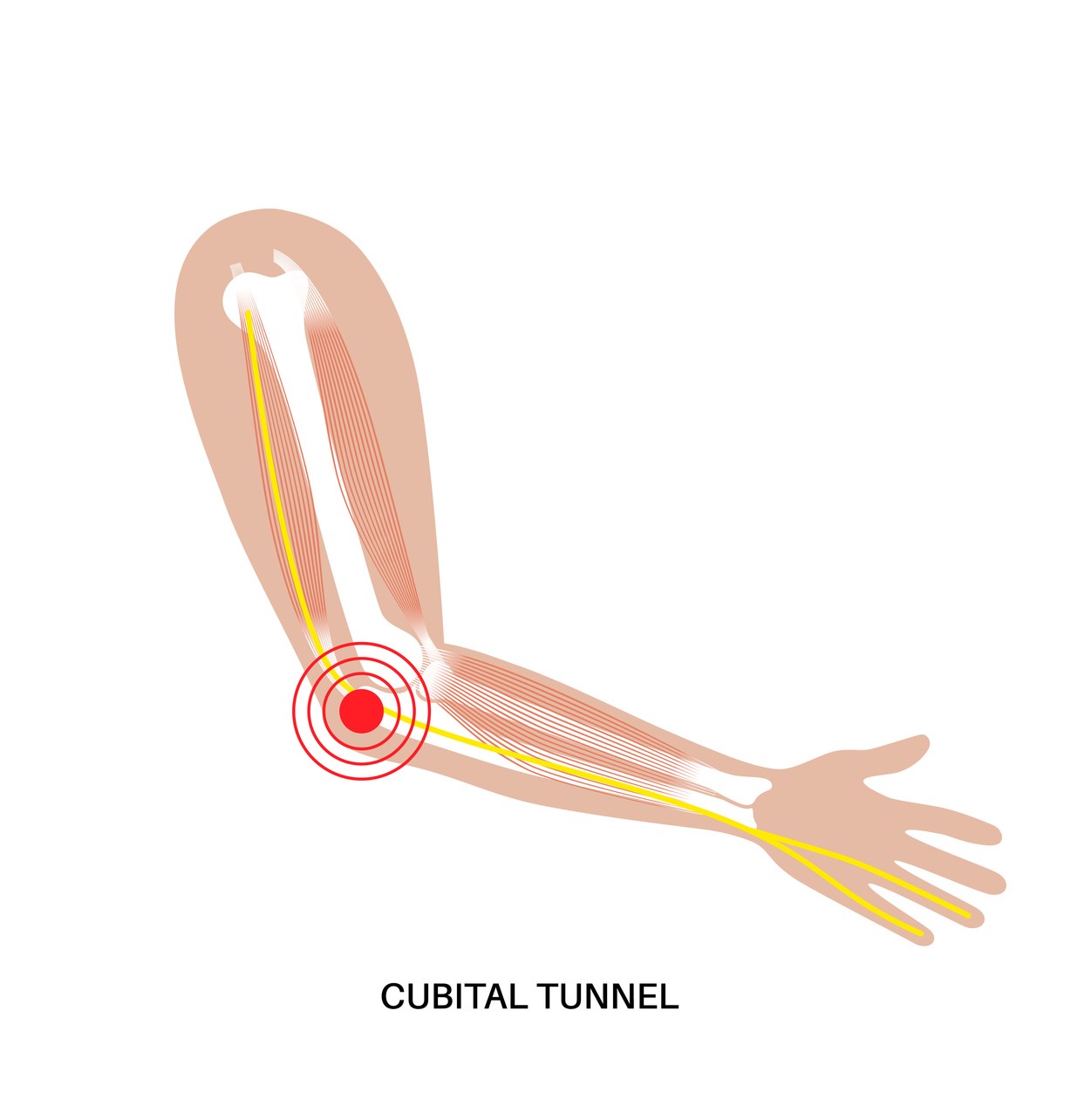What is Cubital Tunnel Release?
Cubital Tunnel Release is a surgical procedure aimed at relieving symptoms associated with cubital tunnel syndrome, a condition caused by compression of the ulnar nerve at the elbow. This procedure involves releasing or decompressing the ulnar nerve to alleviate symptoms such as numbness, tingling, and weakness in the hand and fingers.

Why Might You Need Cubital Tunnel Release?
Cubital Tunnel Release may be recommended if you experience:
- Numbness and Tingling: Persistent numbness or tingling sensation, especially in the ring and little fingers.
- Weakness: Weakness or difficulty gripping objects, particularly in the affected hand.
- Pain: Pain in the elbow or hand, which may worsen with certain movements or activities.
- Worsening Symptoms: Symptoms that worsen over time or do not improve with conservative treatments.
Hear What Patients Say About Us . . .

5.0
"At 71, my hobbies include gardening and giving enthusiastic hugs to grandkids. But when a weird elbow pain made every squeeze feel like lightning, I panicked. Dr. Bohm was like the wise neighbor who always knows how to fix your fence. He diagnosed my cubital tunnel issue so fast and explained the solution as if we were just chatting over coffee. After the release, I can hold my tulips and my grandbabies without a hitch. Cheers to good doctors and blooming gardens!"
— Barbara T., Troy (Cubital Tunnel Release)
Find a Hand Surgeon
Hand & Upper Extremity
Genesys Surgery CenterLivoniaView all
What Are the Steps in a Cubital Tunnel Release Procedure?
Preoperative Preparation
- Medical Evaluation: Comprehensive review of your medical history, symptoms, and previous treatments.
- Diagnostic Assessment: Physical examination and possibly nerve conduction studies to confirm the diagnosis and plan the procedure.
- Informed Consent: Detailed discussion of the procedure, potential benefits, and risks.
During the Procedure
- Patient Positioning: You will be comfortably positioned to allow easy access to the elbow.
- Anesthesia: Local anesthesia is typically used to numb the area around the elbow.
- Incision: A small incision is made at the elbow, exposing the ulnar nerve.
- Release of Nerve: The surgeon carefully releases or decompresses the ulnar nerve, relieving pressure and allowing it to move freely.
- Closure: The incision is closed with sutures, and a sterile dressing is applied.
Postoperative Care
- Observation: Brief period of monitoring after the procedure to ensure there are no immediate complications.
- Activity Guidelines: Instructions on caring for the incision and guidelines for gradually resuming normal activities.
- Pain Management: Medications and techniques for managing postoperative pain and swelling.

Recovery and Rehabilitation
Postoperative Care
- Immediate Effects: Many patients experience relief from symptoms shortly after the procedure.
- Pain Monitoring: Keeping track of pain levels and hand function to track recovery progress.
- Follow-Up Appointments: Scheduled to monitor healing, remove sutures, and assess hand function.
Potential Complications
While Cubital Tunnel Release is generally safe, potential complications can include:
- Infection: Risk of infection at the incision site.
- Bleeding: Minor bleeding or bruising may occur.
- Nerve Damage: Rare but possible risk of temporary or permanent nerve damage.
- Stiffness or Recurrence: Stiffness or the possibility of cubital tunnel syndrome recurring.
Benefits of Cubital Tunnel Release in
Hand & Upper Extremity Management
- Relief of Symptoms: Reduction in numbness, tingling, and weakness in the hand and fingers.
- Improved Functionality: Enhanced ability to perform daily activities and use the affected hand.
- Quick Recovery: Short recovery period with minimal downtime.
- Enhanced Quality of Life: Improved overall well-being and ability to engage in work and leisure activities.

